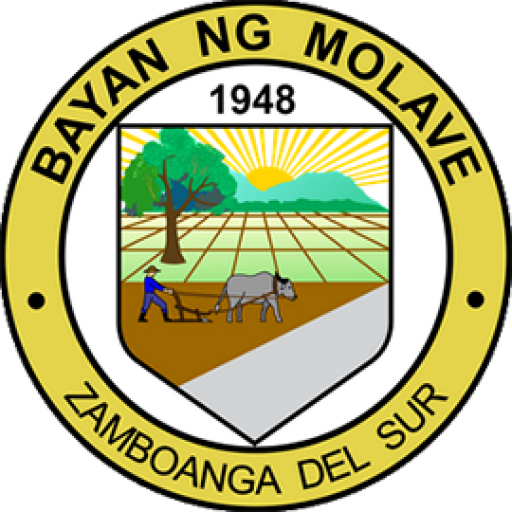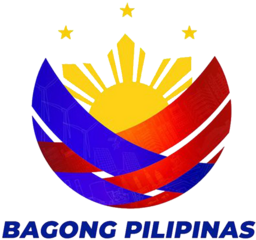MANILA, June 30 — President Rodrigo Roa Duterte became a “big winner” in 2016 after his landslide victory with more than 16.6 million votes.
No other previous President has dominated the national discourse in the way the Chief Executive has. His every public appearance has received extensive media coverage, with everyone’s eyes focused on his every move, and with the public having an opinion on his every statement.
The first 12 months of the Duterte administration has been an extraordinary year — highly audacious, very productive and marked by political will, making the nation the real winner.
Socioeconomic gains
President Duterte is a “government worker”, as he used to say, who silently and steadily works to produce the best results.
As he enters his second year in office, the President has laid the foundation to sustain current successes and transform the Philippines to a prosperous, predominantly middle class society.
He introduced several anti-poverty initiatives, including the Philippine Development Plan (PDP) 2017-2022, a blueprint for the country’s development. He has sustained the country’s economic momentum which would uplift the standing of each and every Filipino in the hope of bringing prosperity for all.
The Philippine economy, under the Duterte administration registered three quarters of economic expansion. Gross domestic product (GDP) posted a 6.4 percent growth in the first quarter of 2017, making the country one of the strongest performers among major emerging economies in Asia. Foreign direct investments (FDI) registered USD 1.6-billion net inflows in the first quarter of 2017, or 16.6 percent higher than in the same period last year. This signifies investors’ confidence in the country’s leadership.
The Duterte administration, sustaining the country’s growth momentum, launched the Build-Build-Build Infrastructure Plan that could usher the country in a “Golden Age of Infrastructure.”
The major infrastructure agencies of the government, such as the Department of Public Works and Highways (DPWH), Department of Transportation (DOTr), and Bases Conversion Development Authority (BCDA), together with the National Economic and Development Authority (NEDA), the Department of Finance (DOF) and the Department of Budget and Management (DBM), are coordinating and working hand in hand for the first time in history to realize the President’s vision for the country.
To cap his first year in office, President Duterte, who chairs the NEDA Board, approved 11 infrastructure projects, cumulatively worth some PHP304-billion, for implementation in its June 27 Cabinet meeting.
These include the Mindanao Railway Project (MRP) Phase 1; Malolos-Clark Railway Project (PNR North 2); Cavite Industrial Area Flood Risk Management Project; Clark International Airport (CIA) Expansion Project; Education Pathways to Peace in Conflict-Affected Areas of Mindanao (PATHWAYS); Australia Awards and Alumni Engagement Program – Philippines; New Communications, Navigation, and Surveillance/Air Traffic Management (CNS/ATM) Systems Development Project; New Configuration of the Light Rail Transit (LRT) Line 1 North Extension Project; Change in Scope, Cost, and Financing Arrangements for the Arterial Road Bypass Project Phase II; Change in Financing of the New Centennial Water Source – Kaliwa Dam Project; and Project Approval and Change in Financing of Chico River Pump Irrigation Project.
The infrastructure plan of the Duterte administration is not only limited to a network of roads, bridges and highways. The current government launched free wi-fi and high-speed internet services along EDSA last June 12.
Setting the tone of his governance, the President has initiated many firsts in the area of poverty reduction.
These include:
• free tuition in state universities and colleges for Filipino undergraduate students starting Academic Year 2017-2018;
• free irrigation;
• free medical assistance in six hospitals that offer the Libreng Gamot Para sa Masa (Lingap) program which benefited some 9,429 indigents (from March to June 9);
• microfinancing assistance that gives Pondo sa Pagbabago at Pag-asenso (P3) program for the underprivileged Filipino entrepreneurs, with Mindoro, Leyte, and Sarangani as pilot provinces;
• additional PHP600 rice subsidy to each Pantawid Pamilyang Pilipino Program (4Ps) household beneficiary;
• strict enforcement of labor laws particularly on security of tenure, which saw the regularization of 45,605 workers (from July 2016 to March 2017);
• across-the-board increase in the monthly pension of more than two-million Social Security System (SSS) retirees;
• awarding of Certificates of Land Ownership Award (CLOAs) to Hacienda Luisita farmers starting with 111 beneficiaries, as of February 2017; and
• fast-tracking the rehabilitation of Yolanda-affected areas with the construction of 50,791 housing units and 1,790 new classrooms and the repair of 701 state colleges and universities, 38 airport facilities, and 27 seaport facilities, as of the first quarter of 2017.
Furthermore, the President has increased the rates of combat duty pay and combat incentive pay of the police and the military. His support to the men and women in uniform is unequivocal. No other Commander-in-Chief has visited so many military camps. PRRD made the rounds and went to 28 camps in 2016 and 15 camps at the start of 2017 to boost troops’ confidence and morale. He likewise made use of the presidential plane to transport wounded soldiers.
These social programs, together with the infrastructure investments, will be financed by, among others, the revenues to be generated by the Tax Reform for Acceleration and Inclusion (TRAIN), certified by the President as an urgent piece of legislation.
Improvement in law and order
Economic prosperity will not be realized if lawlessness and corruption proliferate in a nation. The public is fully aware that the spread of prohibited drugs has reached an alarmingly high level, the rationale behind the President’s centerpiece program of law and order.
The former mayor of Davao City waged his campaign on the agenda of fighting illegal drugs, criminality, and corruption.
More than a security problem, the Duterte administration treats the drug situation in the Philippines as a public health issue.
A year has passed and the Filipino people are seeing the fulfillment of his promise achieving many firsts in the fight against illegal drugs.
These include:
• the voluntary surrender of 1,304,795 drug personalities for the period July 1, 2016 to June 6, 2017;
• the confiscation of 2,340.74 kilos of ‘shabu’ with street value of PHP12.1 billion for the period July 1, 2016 to June 6, 2017;
• the construction of a mega rehabilitation center in Nueva Ecija with eight more being constructed in Camp Bagong Diwa, Taguig City; Pilar, Bataan; Cavite; Bohol; Malaybalay, Bukidnon; Sarangani; Agusan del Sur; and Marawi City, Lanao del Sur; and
• Technical Education and Skills Development Authority (TESDA) skills training programs to fully-rehabilitated drug dependents, including their immediate family members.
This unprecedented anti-drug crusade taken by the Duterte administration has led to the decrease in crime rates by 27.02 percent from July 2016 to May 2017.
A total of 82 percent of residents in Metro Manila feel safer because of the intensified illegal drugs crackdown by the Philippine National Police (PNP), according to a Pulse Asia survey.
Apart from halting illegal drug trade and criminality, the Duterte administration’s law and order agenda is also designed to regain the people’s trust in government. It spearheaded innovative initiatives to make the government accountable, open and transparent and the delivery of government services efficient.
These many firsts include:
• implementation of the Freedom of Information (FOI) in the Executive Branch;
• creation of 8888 Citizen’s Complaint Hotline for erring government officials;
• online streaming of closed-circuit television (CCTV) inside the offices at the Bureau of Customs (BOC);
• social media livestreams of the President’s activities and Palace briefings;
• the creation of a presidential task force on media security;
• reduction of processing days of business permits and licenses (down to two days for new business registration and one day for renewals), Tax Clearance Certificates (TCC) (down to two working days from submission of complete documents), and certificates authorizing registration (down to five days from the previous 10 days);
• extension of the validity of driver’s licenses from three years to five years;
• implementation of a three-day maximum time for Maritime Industry Authority (MARINA) applications; and
• establishment of a one-stop service center for OFWs.
Paving the way for a lasting peace
Beneath the President’s tough, anti-crime image is a peacemaker. His administration has immediately reopened the peace table with the Bangsamoro by the passage of an executive order in November 2016, reconstituting the members of the Bangsamoro Transition Commission (BTC), to create the draft of the enabling law and implement the 2014 Comprehensive Agreement on the Bangsamoro (CAB) and other signed agreements.
He is, likewise, looking at the possibility of resuming the stalled peace talks between the government and the local communist party.
Meanwhile, the President acknowledged the importance of including in his Cabinet people coming from all persuasions but with the common passion to serve the people.
Beyond the first year
These among other things were accomplished in the first year. Much has been done but much more would be achieved in the next five years.
PRRD hopes to launch food security initiatives to increase rice and fish production. Also, he wants to create a separate department for overseas Filipino workers (OFWs) and to set up an OFW Bank.
He likewise wishes the continuing upgrade of military hospitals such as in Quezon City and Jolo, Sulu, among others, the procurement of more modern equipment and assets and the establishment of education fund for soldiers’ children.
A long pipeline of infrastructure projects is expected to be rolled out in the next five years. Major expressways such as the Luzon Spine Expressway, NLEX-SLEX Connector, Harbor Link, Central Luzon Link Expressway (CLLEx) and Cavite Laguna Expressway (CALA-X) are targeted to be completed by the Department of Public Works and Highways (DPWH) before the President’s term ends.
Other infrastructure projects of the DPWH include the Radial Road (R-10), Laguna Lake Highway, Quezon Bridge, Bonifacio Global City – Ortigas Center Link Road Project, Binondo – Intramuros Bridge, Estrella – Pantaleon Bridge, the Metro Manila Priority Bridges Seismic Improvement Project (Guadalupe Bridge and Lambingan Bridge), Lucban Bridge along Manila North Road, Abulug, Cagayan, Governor Miranda Bridge II, Brgy. Bincungan, Tagum City, Davao del Norte, Davao City Coastal Road, Metro Cebu Expressway, New Bacolod Economic Highway and the Panguil Bay Bridge Project.
The Duterte administration looks forward to even more productive years in building a nation worthy of Filipinos, where there is comfortable life for all Filipinos under a trustworthy government. (PCO Content/PNA)






